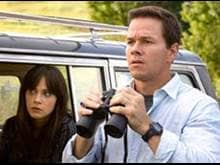
The book of Revelation seems perfect for blockbuster movie treatment. It has drama, action, some horrific bad guys, scads of CGI opportunities and--in true Hollywood fashion--a happy ending.
But, "Left Behind" movies aside, the film industry has yet to generate an apocalyptic vision of the future that features a truly biblical Apocalypse--and M. Night Shyamalan's new doomsday vehicle, "The Happening," likely won't be an exception.
Granted, the Apostle John's vision of the end of the world isn't wholly incompatible from some of Hollywood's own imaginings. Plenty of end-of-the-world flicks reference the Bible, and horror films are stuffed with references to the Number of the Beast. Revelation doesn't rule out the world being rocked by giant meteors, nuclear war, or environmental catastrophe. But aliens? Flesh-eating zombies? Hostile seagulls? John forgot to mention those.
When Worlds Collide (1951)
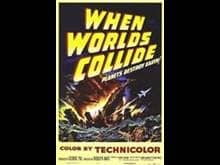 The year was 1951, and the Nuclear Age is still in its infancy. Nazi Germany has been vanquished. Environmental worries are decades away. What really worries Americans? Rogue planets. Not aliens, mind you. Planets.
The year was 1951, and the Nuclear Age is still in its infancy. Nazi Germany has been vanquished. Environmental worries are decades away. What really worries Americans? Rogue planets. Not aliens, mind you. Planets."When Worlds Collide," one of the Silver Screen's first real end-of-the-world thrillers, featured just such a planet-a huge gas giant named Bellus. As Bellus creeps closer, the earth is overwhelmed by earthquakes, tidal waves, and a massive surge of spaceship building as nations desperately try to create "arks" capable of leaving our doomed planet. Their target of choice? Zyra, Bellus' tagalong moon, which proves to be surprisingly hospitable, considering.
Of course, these arks-like the original--only hold so many people and animals and souvenirs of civilization: The privately financed spaceship we follow in "Worlds" only has room for 50. Who gets to go? Who gets left behind? One hint: If you're in a wheelchair, forget it-even if you did pay for the blasted ship.
War of the Worlds (1953)
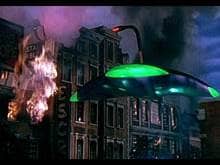 "The War of the Worlds," be it H.G. Wells' sci-fi novel or the radio and film adaptations that followed, is not, technically, about the end of the world. Civilization makes it through OK in the end-but only because the invading aliens didn't get the proper shots before they left home.
"The War of the Worlds," be it H.G. Wells' sci-fi novel or the radio and film adaptations that followed, is not, technically, about the end of the world. Civilization makes it through OK in the end-but only because the invading aliens didn't get the proper shots before they left home.Though Steven Spielberg and Tom Cruise gave "War" slick, CGI-laden treatment in 2005, the real cinematic classic is the 1953 version, in which a Martian-bearing meteorite lands near the tiny town of Pine Summit, Calif. Before you know it, the earth is under attack by a hostile alien army, equipped with flying saucers, heat rays, impenetrable force fields and a whole lot of Martian gumption. Not even atomic bombs stop these unwelcome guests, and the alien race starts spreading over the land like kudzu. Beaten and discouraged, a few survivors of the initial onslaught decide to spend what they assume will be their last moments in a church. It's appropriate, then, that when they see the Martians war machines start toppling from the church door-bearing, it seems, under-the-weather invaders--it seems nothing less than miraculous.
The Birds (1963)
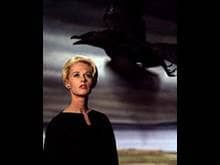 When Alfred Hitchcock ventured into the realm of apocalyptic film, he ignored the perfectly reliable themes of killer comets or nuclear war. He'd rather give us all something else to beak out-er, freak out about.
When Alfred Hitchcock ventured into the realm of apocalyptic film, he ignored the perfectly reliable themes of killer comets or nuclear war. He'd rather give us all something else to beak out-er, freak out about.Hitchcock tells us that the birds in the quiet hamlet of Bodega Bay are beginning to act strangely. The seagulls attack well-to-do visitor Melanie Daniels. Crows loiter on school playgrounds. Before long the birds start slaughtering folks-perhaps, we can only assume, to serve at their own Thanksgiving dinners. Feathered friends indeed.
At first residents scoff at the very idea. "I have never known birds of different species to flock together," says one beret-topped ornithologist. "The very concept is unimaginable. Why, if that happened, we wouldn't stand a chance! How could we possibly hope to fight them?"
But soon it becomes obvious the creatures have declared all-out war on humanity. The final scene shows Daniels, her Bodega Bay beau and his family drive from the hamlet through a deceptively peaceful mass of birds, to an uncertain future.
Night of the Living Dead (1968)
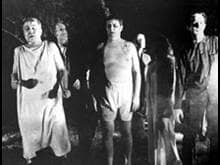 Revelation does tell us that the dead will rise again at the end of the world. It talks about two prophets who will be creepily resurrected, sparking significant terror in the folks who left 'em out in the street.
Revelation does tell us that the dead will rise again at the end of the world. It talks about two prophets who will be creepily resurrected, sparking significant terror in the folks who left 'em out in the street.But the Bible doesn't say anything about any of these "walking dead" devouring the living, and it's doubtful "Night of the Living Dead" creator George A. Romero had the book in mind when he created this grotesque end-of-the-world parable.
Romero never explains what caused these corpses to reanimate, nor does he say why they shuffle so slowly and moan so much. But we do know that these dead are popping up all over the place-not just the farmhouse around with the movie revolves--causing sizable angst for the living. We also know that "Night of the Living Dead spawned an entirely new genre in the realm of apocalyptic film: End-of-the-world-by-corpse. A direct descendant of "Night" is the British film "28 Days Later," which features "zombies" that move quite a bit quicker than Romero's creeping corpses. They're also not, technically, dead.
Beneath the Planet of the Apes (1970)
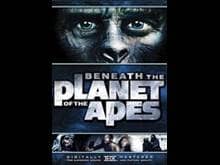 The original "Planet of the Apes" (1968) was pretty apocalyptic, what with all humanity having destroyed itself and all. But it was an absolute lark compared to the sequel, which featured not just intelligent gorillas, but a secret society of large-brained cave-dwellers who worshipped a doomsday bomb-marked with the Greek letters Alpha and Omega.
The original "Planet of the Apes" (1968) was pretty apocalyptic, what with all humanity having destroyed itself and all. But it was an absolute lark compared to the sequel, which featured not just intelligent gorillas, but a secret society of large-brained cave-dwellers who worshipped a doomsday bomb-marked with the Greek letters Alpha and Omega."Glory be to the Bomb, and to the Holy Fallout," the subterranean leader intones. "As it was in the beginning, is now, and ever shall be. World without end."
But clearly the bomb can't save these folks, and God is nowhere to be found in "Beneath." After a bloody battle with a band of gorillas, George Taylor-played by Charlton Heston-uses his last breath to literally curse the apes and set off the bomb, destroying what was left of earth. "In one of the countless billions of galaxies in the universe," a voice solemnly says, "lies a medium-sized star, and one of its satellites, a green and insignificant planet, is now dead." Bummer.
Mad Max 2: The Road Warrior (1981)
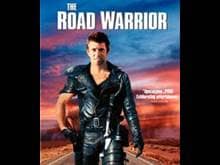 The subtext of Australia's classic post-apocalyptic story, where people fight and kill for a couple of gallons of gas, seems to be inching closer to reality all the time. Though it's the cinematic high point for the Mad Max trilogy (there's rumors of a fourth film in the works), it appears to catch civilization at a particularly low ebb.
The subtext of Australia's classic post-apocalyptic story, where people fight and kill for a couple of gallons of gas, seems to be inching closer to reality all the time. Though it's the cinematic high point for the Mad Max trilogy (there's rumors of a fourth film in the works), it appears to catch civilization at a particularly low ebb.In the first film, we learn that the world has gotten increasingly desperate for fuel, and in desperation, the Australian government created a special band of patrol officers, including Mel Gibson's Mad Max. By the time the second film opens, the government is nothing more than a fond memory, and Max is on his own, with only his cool car and leather garb to remind him of the good old days.
Civilization seems to be making a wee comeback by the time Gibson tangles with Tina Turner in "Mad Max Beyond Thunderdome:" At least folks are making game shows again. Which means in Mad Max's world, folks may still have Revelation to look forward to.
Reign of Fire (2002)
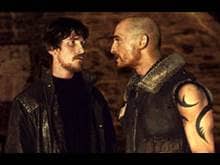 Before 2002, we'd seen Hollywood destroy the planet via nuclear war, earthquakes, exploding suns, alien invasions, and really peevish birds. But Tinseltown topped itself when it opted to bring about Armageddon via dragons.
Before 2002, we'd seen Hollywood destroy the planet via nuclear war, earthquakes, exploding suns, alien invasions, and really peevish birds. But Tinseltown topped itself when it opted to bring about Armageddon via dragons.Turns out these impressive creatures aren't mythical--just hibernating, waiting for poor construction workers to stumble across them. Once they do, the dragons leap from the ground and literally toast civilization, with survivors fleeing to flame-retardant castles. But there is hope: Most of the marauding flame-throwers are females, so if they (the people) can just find the lone dragon stallion and kill it--or at least neuter it--life will become more conducive to humanity once again.
There is a dragon in Revelation, and this one--a symbolic representation of Satan-makes the critters in "Reign" look like geckos. He's gigantic and red with seven heads and ten horns and a tail hefty enough to sweep stars from the sky. Like the dragons in "Reign," the biblical dragon eventually loses the battle-but crossbows had nothing to do with it.
The Day After Tomorrow (2004)
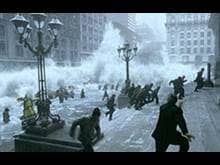 Most scientists now agree that the world is warming, and many gently suggest we should do something about it.
Most scientists now agree that the world is warming, and many gently suggest we should do something about it."The Day After Tomorrow" takes the worst-case global-warming scenarios and ratchets them up several hundred notches, creating CGI-level devastation. A flood ravages New York City. Tornadoes torment Los Angeles. Global warming sparks a new ice age, and a polar ice cap creeps across the northern hemisphere, freezing several notable landmarks along the way. Woolly Mammoths don't show up by film's end, but one can only assume they'll be around for the sequel, "The Day After the Day After Tomorrow." Which will be followed by a third film, "Sometime Next Week."
Humanity--at least sizeable chunks of it--survives this film. "Mankind survived the last ice age," says scientist Jack Hall. "We're certainly capable of surviving this one. The only question is, will we be able to learn from our mistakes?"
According to Revelation, which has references to earthquakes and locusts and huge hailstones, we might not be so lucky.
Children of Men (2006)
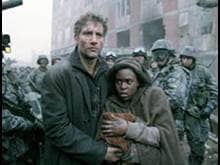 In a genre that positively wallows in spectacular mass destruction, the theme behind "Children of Men" is comparatively subtle. What if people just stopped having babies?
In a genre that positively wallows in spectacular mass destruction, the theme behind "Children of Men" is comparatively subtle. What if people just stopped having babies?By 2027, according to the film, the world has gone baby-less for 18 years. Every country in the world, except for the United Kingdom, has fallen into anarchy, and refugees are flooding into the island nation at an alarming rate.
This is the world occupied by Theo, a hard-drinking guy who stumbles upon the earth's greatest miracle--a pregnant African immigrant named Kee. Theo and a legion of do-gooders protect Kee and her precious unborn cargo, often sacrificing their own lives to do so.
Though "Children of Men" contains barely a whiff of Revelation, it's as spiritual an apocalyptic tale as you're likely to see. It's dotted with Christian symbolism, and many critics have described it as a retelling of the Nativity. P.D. James, who wrote the book on which the movie is based, described it as "a Christian fable, which was not what I set out to write."
I Am Legend (2007)
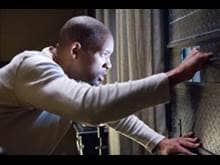 Curing cancer was supposed to be a good thing. Not so much in last year's smash "I Am Legend," a retelling of Richard Matheson's classic sci-fi story. Seems the "cure" turned pretty much everyone into vampire-like night stalkers. Those who didn't get sick were summarily eaten by their bald, pale brethren--except, of course, for Col. Robert Neville, who roams the deserted streets of New York City with his trusted German Shepherd, Sam.
Curing cancer was supposed to be a good thing. Not so much in last year's smash "I Am Legend," a retelling of Richard Matheson's classic sci-fi story. Seems the "cure" turned pretty much everyone into vampire-like night stalkers. Those who didn't get sick were summarily eaten by their bald, pale brethren--except, of course, for Col. Robert Neville, who roams the deserted streets of New York City with his trusted German Shepherd, Sam.Neither zombie-esque vampires nor brave German Shepherds make overt appearances in the book of Revelations. Nevertheless, "I Am Legend" could also be read as a near-Christian parable, loaded with themes of sacrifice, redemption, and divine intentionality. The night stalkers could represent humanity without God-mere animals driven by desire. Humanity's salvation is embedded in Neville's blood, which he literally gives away before sacrificing himself.
When Neville finally discovers a couple of survivors, one of them tells him that "If we listen, you can hear God's plan."
"There is no God!" Neville shouts back at her. But he changes his mind in the end, saying quietly, "I'm listening."



Tidak ada komentar:
Posting Komentar